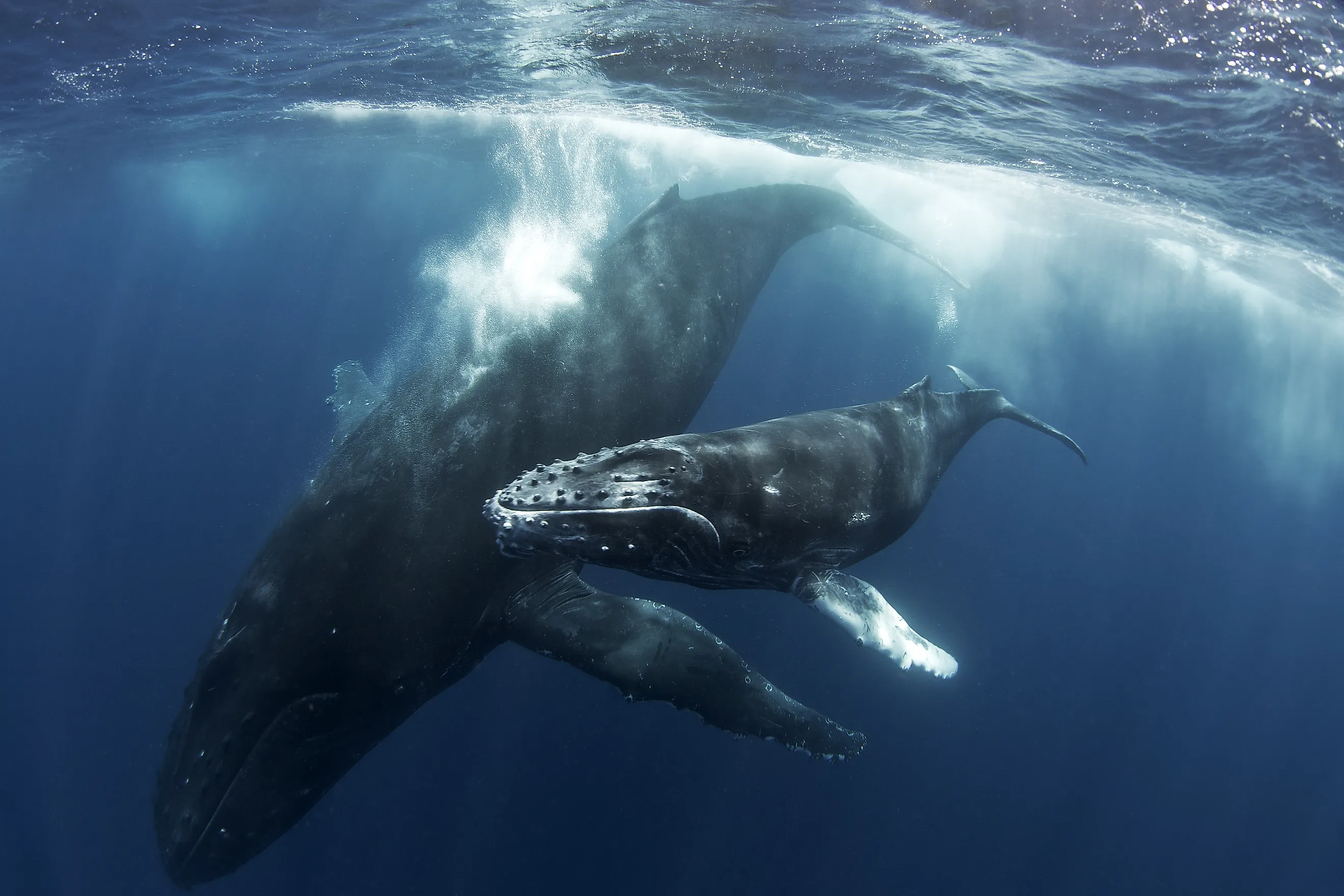
Whales
Whales, the largest living creatures on Earth, have captured the imagination of humans for centuries. From their immense size to their graceful movements as they effortlessly breach the water, these majestic marine mammals embody power and mystery. In 2025, the blue whale remains the largest animal on Earth, gliding silently through the ocean, only displaying its blueish-grey hues on occasion. Beyond their awe-inspiring presence, whales play a crucial role in the delicate balance of our oceans, acting as guardians of the oceanic realm. These denizens of the deep have adapted to both warm tropical waters and frigid polar regions, which demonstrates their incredible versatility. From their diverse habitats and remarkable food habits to the environmental and human threats they face, whales continue to fascinate researchers, conservationists, and nature enthusiasts alike.
Food Habits
Whales inhabit the depths of the North Atlantic, North Pacific, and Indian Ocean, as well as the icy expanses of the Arctic and Antarctic. Whales also live in seas like the Mediterranean and North Sea. They traverse long distances annually in search of food, mates, and even safety. These gentle giants are divided into two main groups namely baleen whales or Mysticetes (baleen whales) and Odontocetes (toothed whales).
Baleen whales, of which there are 14 species, possess baleen plates instead of teeth, which enables them to filter their feed. Krill is a common food source for these whales, but some baleen species have specialized diets:
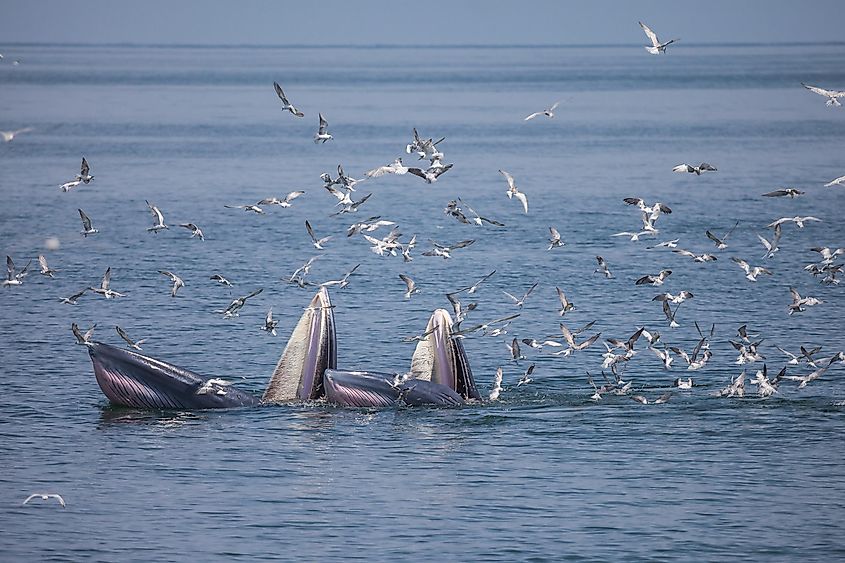
- Gray Whale: In addition to krill and amphipods, gray whales exhibit bottom-feeding behavior, where they scoop up sediment from the ocean floor to filter out tiny invertebrates. Gray whales embark on one of the longest migrations of any mammal, traveling thousands of miles each year between the Arctic and the warmer waters of Mexico.
- Bryde's Whale: This whale species feeds opportunistically by consuming a variety of prey, including small fish, squid, and crustaceans.
Toothed whales, of which there are 73 described species, have a diverse diet based on the prey available, habitat, and the size of the whale species:
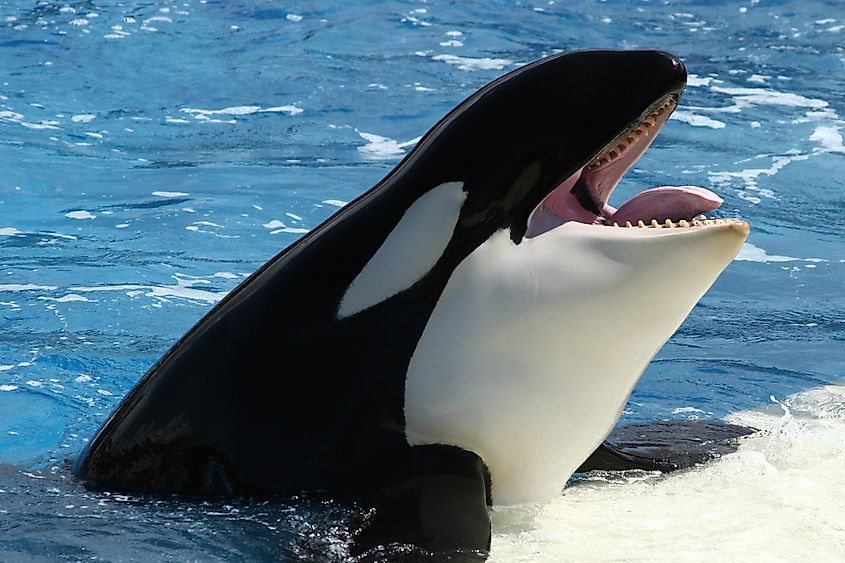
- Orca/Killer Whales: Although these cetaceans are grouped under dolphins, they also have whales in their name as often the term whale is used as a synonym for Cetaceans. Killer whales, the apex predators of the marine world, display remarkably intuitive hunting strategies. An orca's diet includes fish, squid, seals, and even other whales. A symbol of extreme intelligence, orcas put their socially complex existence on display for other creatures to fear.
- Sperm Whale: This deep-diving whale prefers to find food in the ocean's inky depths and feeds primarily on large squid and deep-sea fish. It is estimated that a sperm whale eats one ton or more prey per day. The sperm whale is also the largest-toothed predator.
Habitat
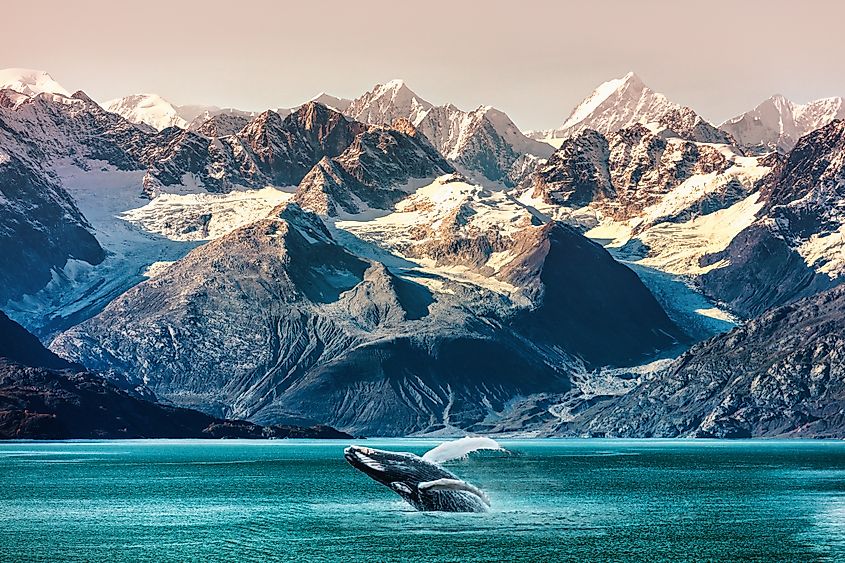
The Arctic serves as a critical feeding ground for several whale species, including the bowhead and beluga whales. These gorgeous whales navigate their way through the sea ice, utilizing cracks to breathe and reach prey. The Antarctic waters also provide a home to a variety of whales, such as humpbacks and minke whales. They migrate to these feeding grounds during the warmer seasons to feed on the abundant krill populations. The fin whale and critically endangered North Atlantic right whale are commonly found in the North Atlantic Ocean. These whales migrate over long distances to reach warmer breeding grounds in the south.
Reproduction
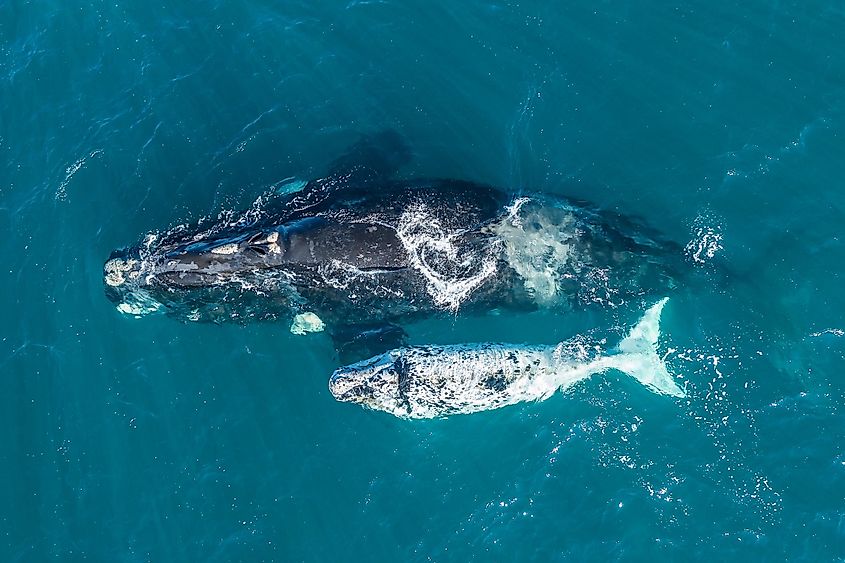
Being the enigmatic creatures they are, whales exhibit truly fascinating reproductive behaviors. Male humpback whales, for instance, "sing" intricate songs to attract females during the mating season. These songs often last several minutes, and each humpback whale has its unique melody. As the breeding season commences, male whales breach and slap their tails to display their strength and dominance to the females.
On their part, female whales carry their young for extended periods between 10 to 18 months, depending on the species. They provide exceptional care to their calves during the nursing process, ensuring their health, growth, and survival. Calves grow rapidly, benefiting from a high-fat diet that allows them to store energy reserves for extensive migration journeys.
Environmental Threats
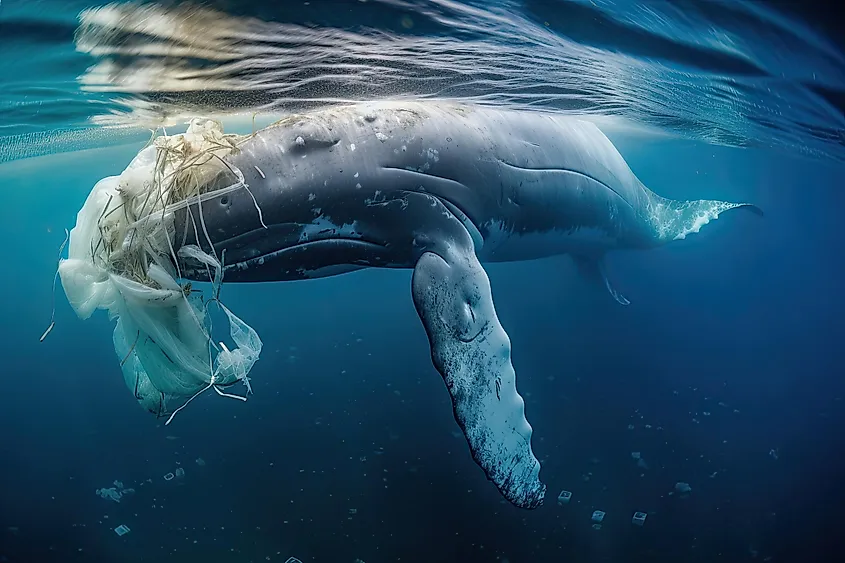
Unfortunately, a whale's ocean journey is fraught with peril. Whales face several environmental threats, many of which are a direct consequence of human activity. Climate change and its associated effects, such as rising sea temperatures, acidification, and melting ice caps, continue to disrupt whale habitats and diminish food sources. Pollution, especially plastic waste, and devastating oil spills continue to contaminate the oceans, posing hazards to the health of whales and other marine life.
Moreover, overfishing and bycatch further deplete food sources and can lead to the entangling of whales in fishing gear which hurts or even kills them. Additionally, underwater noise and vibrations caused by shipping, sonar activities, and seismic surveys disturb whale communication, feeding, and migration patterns.
By cherishing and respecting whales, we can help safeguard the future of these beautiful creatures while preserving the health and resilience of our oceans. Whales will always remind us of the beauty and value of nature, so as we continue to navigate and explore the oceans, let us strive to be stewards of the sea. Let us work together to protect and ensure a future for the mighty whales, so we can maintain the delicate balance of the oceans that is their home.











